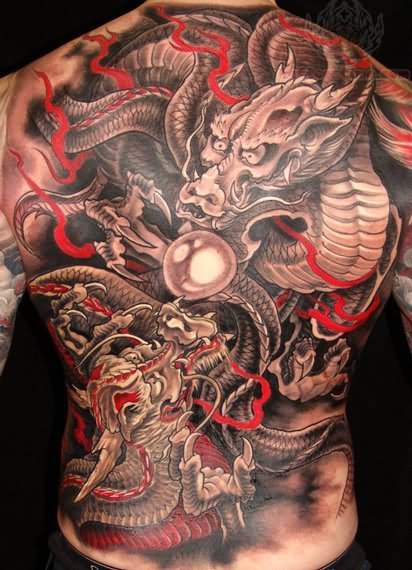
Asian Style Tattoos
Traditionally, Japanese tattoos began as a means of conveying societal status as well as serving as spiritual symbols that were often used as a sort of charm for protection as well as symbolizing devotion, not unlike modern religious tattoos. Over time, tattoos in Japanese culture developed as a form of punishment similar to what was seen in Rome where it was common practice to tattoo prisoners of war, criminals, and slaves as a means of making their status in society instantly recognizable. Eventually the practice faded and tattoos returned as a status symbol among the merchant class who were, interestingly enough, banned from flaunting their wealth.
There are a number of images and symbols used in the Japanese style of tattooing to convey specific meanings. These images are used to convey a person’s beliefs, aspirations, or character traits. Called “motifs”, these design elements are intended to have the same meaning wherever they are used so that meaning is not unique to the individual. That means that anyone that sees the tattoo can instantly recognize the meaning and what they wearer wants to have conveyed, be it personality traits, character attributes, or association with a criminal organization.
Today many people proudly wear Japanese style tattoos for their beautiful artistic merits, flowing composition, and the deep meaning associated with the many aspects of Japanese tattoo designs.